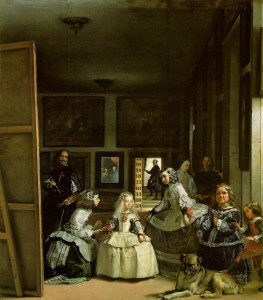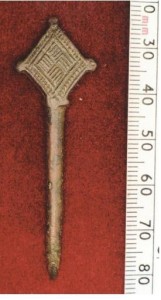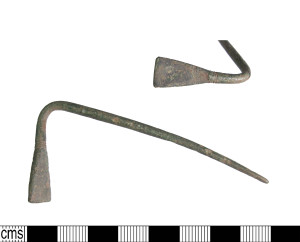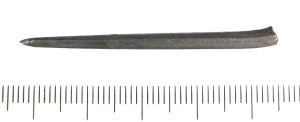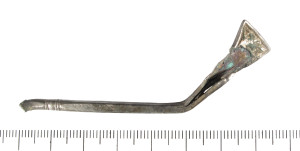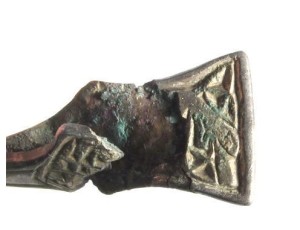For those of you who know me, my dissertation is becoming an unwieldy problem. Namely, I can’t get anyone to supervise it so I keep plugging away independently at an institution that doesn’t have a medieval program. The joke is on me I suppose. I mean, I did get myself into this.
Except there are only three people in Southern California who would be able to advise this, and after meeting with a medieval professor the other day, I realize one is unfortunately no longer able to for health reasons, and that leaves two. And both of them are at the same university. While this may sound fantastic, it is also makes the entire process much more high stakes – it’s all or nothing.
I have been meeting with several professors over the course of the last few months finalizing plans for my “big move” while simultaneously continuing forth with my research. Unfortunately, outside of offering editing advice, none of these professors can really help me with the actual content. The earliest any of them can go is the 16th century, and I am working with the 8th to 13 centuries, specifically 1274 – and looking at Anglo-Norman, Anglo-Saxon, and French texts (with an emphasis on paleography and philology within scribal culture).
While this may sound like a done deal, it is far from it. I still need the other university to accept me, and at least one of the professors to agree to supervise me. According to my current professors my methods are fine, and I am doing all the right things. My scores are very good, and I have been literally working around the clock to produce quality material for several purposes (publications, conferences, lectures, etc.). However, I have a few drawbacks, which don’t sound like drawbacks, but they are. I have an MA already (hence all the teaching I do). I was under the impression this was a good thing and I could get straight to work, but I have numerous times been told this is actually not to my benefit since I am denying my perspective institution the opportunity to “mold” me. I don’t think I am doing any such thing – I am very flexible!
Which brings me to my next two points. I may be flexible, but from the sounds of my dissertation topic, I don’t sound like it. As I am editing my proposal for the umpteenth time I am teetering between explicitly stating my interests, and sounding just vague enough to where I leave room to be guided. Since I have been working on this project without supervision I would think there is plenty of room for someone with expertise in the field to shift my perspective. Even though I have written portions of it and completed loads of research I am pretty sure a lot of it will get discarded and much of my research was simply done for familiarity purposes. One of my professors once advised me that I need to learn to “kill my babies” when it comes to my writing – a process I had quite some difficulty with in my first semester of the MA. I have since learned what it means, and am prepared to do just that – it is part of the writing process, and good writing requires a few good red slashes.
So I am torn – do I tell them “this is what I want to do” or do I leave it ambiguous enough for them to insert their own meaning? What if they superimpose a meaning I never intended and I end up in the same predicament I am in now? I applied to a PhD program as a medievalist. I have been a medievalist since before I could even formally specialize. And now I find myself among other people’s periods…. all lovely in their own right, but not mine as I am scouring libraries at adjacent campuses to find adequate materials on topics of my century, and relying on friends at distant universities for assistance. They have all been unbelievably helpful and generous with their time, but this is not how dissertations are written, and mine needs to find a home.
So I am about to do what graduate students never think they are going to have to do twice, and jump ship because I didn’t do it right the first time. If it wasn’t overwhelming the first time around, this time it is downright frightening. Again… all or nothing. My only consolation is that I am only applying to one place. There is no point playing the “let’s see where I can go” game again, because last time I lost. Don’t get me wrong, I have had an amazing education with just as amazing professors, and I am a firm believer that education is what you make of it. Even when not handed the exact materials because there were no medieval courses offered, I was given the tools to cull out the material myself, and I used them. Unfortunately that only got me so far, and to get to the next level I can’t solely rely on myself.
That is the second problem. I am at times (most of the time) extremely self reliant. I have a hard time asking others for help. Doctoral programs and beyond rely on this time of personality that can self motivate, however, at times you have to admit you need help. This has become such a time for me, and I enlisted several professors to help me. I am extremely grateful at the extent of their willingness and have been terribly diligent at following their advice. After all, I did it my way last time… and well…
There is one point however, where no one can agree. I have had different advice from several of these professors, and from other friends who have successfully completed their doctorate. Since I am very much gearing towards a rather specific project at a single university, would it be wise to contact the professors I wish to work with and simply ask if it is feasible? I don’t know. Some professors think that is a good approach that would provide me with useful information, while others believe it will harm my chances. I want to know. I want to get excited again. But I don’t want to be, as one professor put it, “inappropriate.” And I honestly don’t know if it is inappropriate or not, but I most certainly do not want to offend people I have unbelievable respect for and whose work I admire and wish to learn from. So once again I find myself walking the fine line between just enough and too much.
How much do I tell them about my project? How many questions do I ask, if any? Do I contact them? Do I not contact them? Do I just submit my material, close my eyes, and hope for the best? I just don’t know, and as the deadline looms closer… well… this is it. All or nothing.
